THE RENTERS OF CARROLL GARDENS (2017)
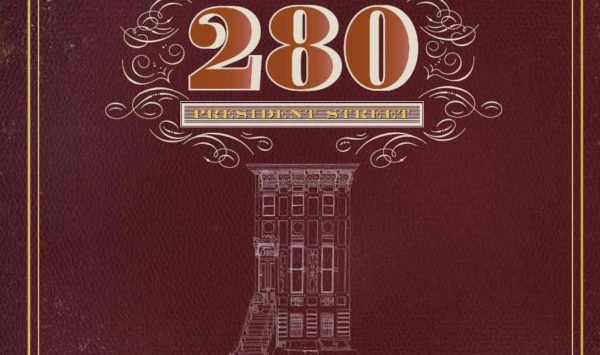
“A British cheese dealer, a newsman who predicted his own death, a leather merchant with a penchant for chorus girls, an alleged wife murderer, a German dentist with political aspirations, a Norwegian hero tugboat captain, and an Italian bomb builder…” These are many of the characters who were discovered during the recent investigation into the history of a Carroll Gardens brownstone. The historic property, No. 280 President Street, is an 1880 brownstone that was, additionally, built by a man who turned out to be the product of a clandestine relationship that rocked Brooklyn in the 1870s with stories of challenged wills, mental illness, and “other” women, presented under such headlines as “BEDEVILED” and “DRAKE’S WILL: His Illegitimate Children Most Carefully Provided for.” For nearly 100 years after the house was completed, No. 280 served its various owners as a rental property. The first owners to actually live in the home, Joachim and Eunice Auer, purchased it in 1979. After navigating redlining, remediating a rat and termite infestation, and entering into a year-long renovation, the Auers settled into enjoying their 2-story and basement home directly across the street from Carroll Park. While the Auers had always been interested in the history of their house (indeed, it was one of the reasons that they bought the house), and after doing some amount of research themselves, they decided to find someone who could more fully track down the history of their home. They turned to a detective – a Brownstone Detective. After a year […]
INSIDE SUMNER ARMORY – BASEBALL! (1895)
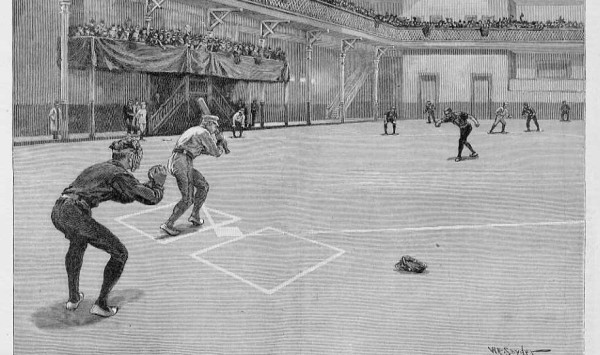
******************************************************************************************************************************** Brownstone Detectives investigates the history of our clients’ homes. The story you are about to read was composed from research conducted in the course of one of those investigations. Do you know the history of YOUR house? ******************************************************************************************************************************** Back in the day, in addition to drilling the troops, our national guard reserve units used to utilize our armories the way we all hope they’ll be used again one day – for exercise and fitness. Here at the 13th Regiment Armory (formerly known as the Sumner Armory on Sumner Avenue [now known as Marcus Garvey Boulevard] between Jefferson and Putnam Avenues), a number of the men chose up sides and played a game of baseball – inside. By the mid 1870s, “baseball already was popular in most big eastern cities and remained so throughout the nineteenth century,” noted “The Great Encyclopedia of Nineteenth-Century Major League Baseball” By David Nemec. “The ball was softer, the fielders never wore gloves, the bases were closer together and sliding was taboo–otherwise spectators saw much the same display of skills they did during the outdoor season.” Views of the armory (which was built in 1891, according to Save Bedford-Stuyvesant, in order to replace an armory in Flatbush) from the outside are all too easy to come by. But shots like these (drawings, rather), depicting the layout of the structure from the inside, appear much less often. Originally, according to the New York Times, “(i)nside the headhouse, the administrative section at the front of the armory, […]
A CHILD SNATCHING ON CLASSON (1875)
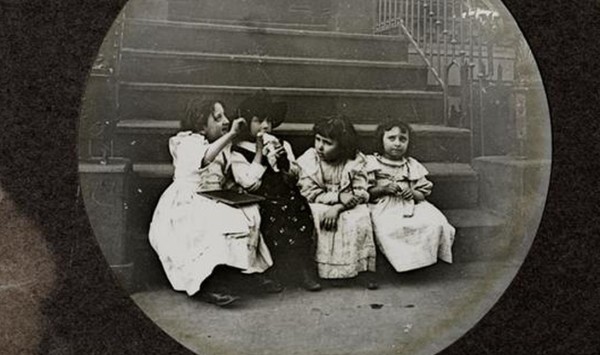
******************************************************************************************************************************** Brownstone Detectives investigates the history of our clients’ homes. The story you are about to read was composed from research conducted in the course of one of those investigations. Do you know the history of YOUR house? ******************************************************************************************************************************** He was “large.” He was “repulsive looking.” And he wanted to steal a child. And so, when Michael Kelly, of No. 22 Franklin Avenue, heard the joyous amusements of a number of young children upon a stoop at No. 208 Classon Avenue, he was resigned that he should have one. Ascending to where they were, he seized little Josephine Carter, aged 3 years, and “despite her cries of alarm, began a hasty retreat.” As he reached the bottom step and turned to flee down the walkway, little Josephine’s head knocked violently against the iron railing, causing her to cry all the more loudly. The children who remained on the stoop, “their playmate having been removed so from their midst, were all terrified, and began to cry in concert.” This crying attracted the attention of a Mrs. Hartley, who resided next door at No. 206 Classon. She, “supposing there had been an accident of some sort, hastened to the street just in time to see Kelly running off with the little girl.” THE CHASE “Very pluckily she followed him for nearly half a block and finally overtook him. Demanding the instant release of the child, she wanted to know why he was carrying it away.” Kelly, though, pretended to be deaf and […]
A CURE FOR WEALTH ON CLINTON AVE (1895)

******************************************************************************************************************************** Brownstone Detectives investigates the history of our clients’ homes. The story you are about to read was composed from research conducted in the course of one of those investigations. Do you know the history of YOUR house? ******************************************************************************************************************************** Along an avenue shaded with tall oaks and plane trees once sat the home of a rich old recluse who’d been swindled of nearly all of her life’s savings in her declining years. A “tumble down” and “badly dilapidated old three story frame house,” the structure “stood forlornly upon the lot at 439 Clinton Avenue in Fort Greene,” noted the Brooklyn Daily Eagle. The roof of the house was “surmounted by a queer little cupola, and the whole structure looks as if it might fall in at any moment.” In short, the Eagle sardonically noted, the house looked as if the owner, Mrs. Caroline Barry, had lived in it ever since the death of her husband “without either painting it or repairing it in any way.” The Eagle was likely going a bit over the top with regards to the house’s condition, as it seemed much out of place situated between stately structures of brick and brownstone all along Clinton Avenue. But as the house has been gone for more than 100 years now, it is impossible to know what its actual state was for certain. What we do know, though, is what it looked like from a drawing done by the newspaper and from Sanborn Fire Insurance maps. From the […]
EXHUMING THE GARDENER OF BED-STUY (1914)
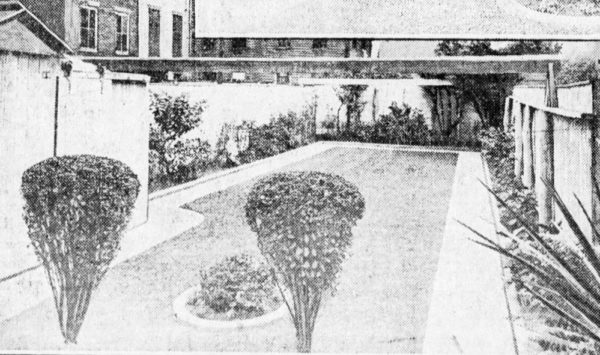
******************************************************************************************************************************** Brownstone Detectives investigates the history of our clients’ homes. The story you are about to read was composed from research conducted in the course of one of those investigations. Do you know the history of YOUR house? ******************************************************************************************************************************** “All stories, if continued far enough, end in death, and he is no true-story teller who would keep that from you.” — ERNEST HEMINGWAY, Death in the Afternoon The dead are everywhere amongst us. When we think of the past, we ponder the lives of those poor souls who once lived, breathed air, told tales, worked, and dreamed dreams. They can no longer tell tales, as the saying goes, but those resourceful ones amongst us can often piece together their forgotten stories and, with them, weave the colorful and ornate narratives of their lives. When we start researching a house and its former occupants, we never know what we’re going to find. Sometimes we unearth a truly bountiful draw – pictures of owners, documentation on the building, and the stories about what had happened at that house – they seem to start popping up all over the place. With other houses, though, it can seem as if the place had never been occupied. But we always find something. No matter how small. And these are the clues that become our figurative footprints. We’re detectives, you know. 😉 THE GARDENER OF 1155 BEDFORD AVENUE When we began snooping around 1155 Bedford Avenue, on the trail of a particular Charles Morse, we found […]
THE CLOCK HOUSE OF CLINTON HILL (1914)
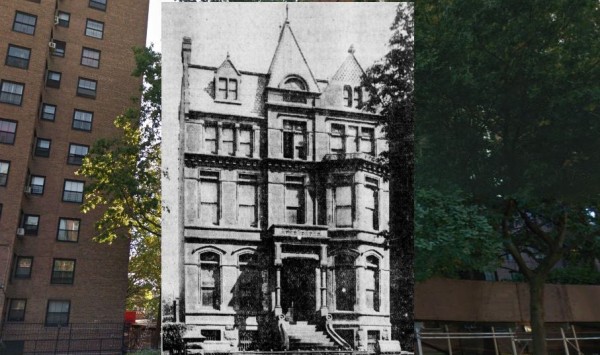
******************************************************************************************************************************** Brownstone Detectives investigates the history of our clients’ homes. The story you are about to read was composed from research conducted in the course of one of those investigations. Do you know the history of YOUR house? ******************************************************************************************************************************** Nothing says “time’s a-wastin’” like the gift of a good clock. And that “tick-tick-tick” on the old mantel back in the day was a constant reminder that there were only a certain number of hours, minutes, and seconds within each day. And, more than anyone else, James Arthur knew it. A CLOCK, A CLOCK, MY KINGDOM FOR A CLOCK! James Arthur, a wealthy industrialist and owner of a machine works in Brooklyn, collected all manner of timepieces. He also fixed them, traded them, dreamt about them, and talked about them all day long – literally. He lectured on clocks, giving hundreds of speeches on timepieces in his lifetime. And as a rich Brooklynite he had a lot of that time on his hands. He traveled. He sought out clocks. He talked some more about clocks through interpreters in foreign lands. Then, at some point, he realized that he needed a home for all of those clocks. And with the number of clocks he owned, it would need to be a big one. No. 357 CLINTON AVENUE – THE CLOCK HOUSE In 1914, Arthur found that place. It wasn’t a new building, and it likely needed some work, but it was grand, had great presence, and – most importantly – it was […]
THE NAMING OF A CLINTON HILL HOUSE (1850)
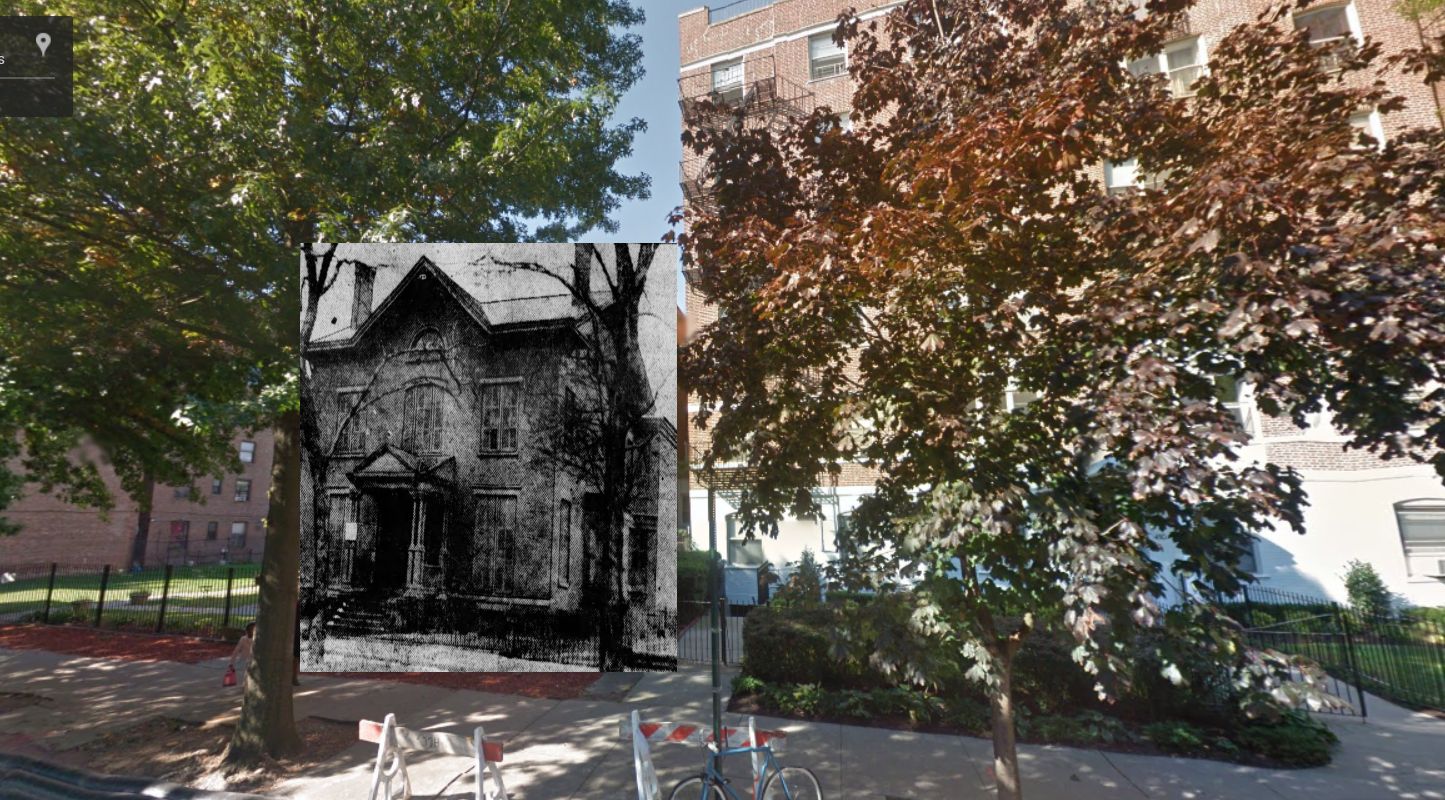
******************************************************************************************************************************** Brownstone Detectives investigates the history of our clients’ homes. The story you are about to read was composed from research conducted in the course of one of those investigations. Do you know the history of YOUR house? ******************************************************************************************************************************** When a house becomes commonly referred to by the owning family’s name, it can be expected that this family 1) built the house, 2) had lived there for some time, or 3) were well-known in the city. Robert Jackson (R.J.) Kimball embodied two of these indicators (No.’s 2 & 3). The Kimballs lived at No. 436 Clinton Avenue since the mid 1880s, and R.J., himself, was very well known. He was an active socialite who rose to build his fortune through banking and real estate. A senior member of the firm, R.J. Kimball & Co., a member of the stock exchange since 1866, and a trustee of the Pratt Institute, his name was very well-known throughout New York City and Brooklyn. Although Kimball passed in 1903, his wife continued to own the house until she sold it in 1921. 436 CLINTON ENTERS A NEW ERA In 1921, after the house had been vacant for a few years, a man by the name of Alfred H. Bromell of No. 59 Livingston Street, noticed the abandoned structure. Probably recognizing it for its value and status as a residence, he purchased the house and large lot. The plot was described as “60X200, which extended back to Vanderbilt av., where there is a garage,” and […]